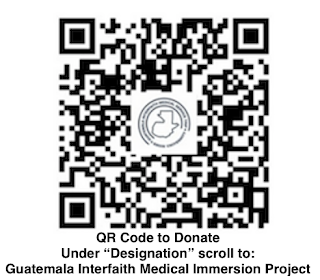Zebras where taking care of horses is hard enough
Zebras where just taking care of horses is hard enough
By Dr. Lauri Pramuk
There are around 400 board certified pediatric rheumatologists in the United States. It is a critical shortage that makes children who live in rural areas often have to travel long distances to see these doctors, who tend to cluster around large metropolitan areas. Pediatric rheumatologists take care of lots of zebras. In medical school you are taught about the horses, common diseases you will see day in and day out that have well defined diagnostic criteria and treatment options. And you are taught about the zebras, diagnoses that have odds like 9 in a million, things that are so rare you probably will never see over the course of a career. The tend to have ill-defined diagnostic criteria and treatment options because there just has not been a large enough cohort of patients to establish those parameters.
I have had several zebra diagnoses over the course of ten years of coming to Guatemala, but none quite so rare as a young woman named Etty, who joined us in clinic on Monday. She is a 16 year old young woman who was perfectly healthy until February of 2020 when she had flu like symptoms that were followed by a reddish, purplish rash on her arms and face that was painful. The rash resolved to be replaced by severe muscle pain and weakness. Her mom, who is a psychologist, took her to many doctors around Guatemala and she had lots of blood work, head imaging and an EMG that all pointed to a zebra - dermatomyositis, incidence 9 in a million. Dermatomyositis is an autoimmune disease that is often tripped off by a virus - many viruses have been known to start the cascade that ends in dermatomyositis. We all know what virus was showing up for the first time around February of 2020. We don’t know what virus set Etty’s off, but it is clear she is very ill now. She is no longer able to walk. Her mom used the wheelchair at clinic to get her around for the visit on Monday. She doesn’t have a wheelchair at home, so we are working on solving that problem. Her mom brought her to the clinic to get a third (or maybe even 4th or 5th opinion) on the diagnosis. Her mom had a stack of papers of her results - all in Spanish. As I was wading through them trying to put two and two together I asked Dr. Ricardo to join us. Dr. Ricardo Valdez is a wonderful, young Guatemalan pediatrician who is doing a year of service with our community in Coban. As I was tracking the rollercoaster numbers of her elevated CPK and reading her EMG results there it was, dermatomyositis. He summarized his assessment of her and it was clear, right in front of us, a zebra. I have never seen a patient with dermatomyositis and I can safely say I will likely never have another one. The multitude of Guatemalan doctors who she had seen over the last 16 months had put her on a cocktail of immunosuppressive medications to try to keep the disease from ravaging her body even more than it already had. I then learned that Guatemala has one pediatric rheumatologist. One. And adult rheumatologists won’t see patients until they are 18. Rare disease, and scarcity of people trained who can treat it, a bad combination.
So, what to do next. Gratefully, my friend of more than 25 years, Deb Bauer joined us on this trip. Deb is a pediatric physical therapist that has been a friend since her husband, Tim, taught high school with Chris when I was in medical school. Deb was able to work with Etty and her mom on some exercises and is even working on making her some ankle foot orthotics using paper mache molds while we are here. Motion is lotion - even though the body doesn’t want to move, in order to not lose more function, in diseases like this, you have to keep the body moving. We are also working on securing her a wheelchair so she can get around. We didn’t learn until after she left clinic on Monday that the chair she was in was the one that belongs to the clinic.
I told Dr. Ricardo that when I get back to the states I can email a friend who is a pediatric rheumatologist and come up with a game plan to try to get her through until adult rheum will see her. We just need a road map of lab frequency, medication parameters, etc. Mom has been educated on what signs and symptoms are emergencies and when to seek immediate care. In the mean time we hope and pray the disease doesn’t worsen.
It is hard enough to see the horses when you don’t have typical resources to help them. Seeing the zebras is remarkably humbling. 
Dr Ricardo, Dr Lauri, Diana and Etty


Comments
Post a Comment